This article was co-authored by Elisabeth Weiss. Elisabeth Weiss is a Professional Dog Trainer and owner of Dog Relations NYC, a dog training service in New York, New York. Elisabeth relies on science-based, force-free, and reward-based techniques. Elisabeth offers behavior training, puppy manners, body awareness and injury prevention, diet, exercise and dog nutrition services. Her work has been featured in New York Magazine and on the Dog Save the People podcast. She also trained all the dogs in the movie "Heart of a Dog" by Laurie Anderson that features Elisabeth's journey with Laurie Anderson's and Lou Reed's dog Lolabelle and how her passion for playing the keyboards played a significant role in improving her quality of life after being diagnosed with pancreatic cancer.
There are 12 references cited in this article, which can be found at the bottom of the page.
This article has been viewed 74,939 times.
Newborn puppies are incredibly adorable, but they require a lot of attention and care – especially if their mother is out of the picture. Having the puppies' mother feed them is ideal, but if that is not possible, then there are some things you can do to make sure they get the nourishment they need. New puppies must be kept warm and bottle fed for the first three to four weeks of the lives. They need to be monitored closely during these first few weeks to make sure they are getting enough to eat and maintaining a high enough body temperature. There are a lot of things to consider when feeding newborn puppies, but with a little research you can learn how to do it correctly.
Things You Should Know
- You can use goat’s milk or commercial canine milk replacement, but do not bottle-feed a puppy cow’s milk.
- Never refrigerate or chill milk for your puppy.
- Your puppy should consume 25-35 milliliters of formula for every 3.5 ounces of their body weight, and you should feed them once every 2-3 hours.
- Start transitioning to dry food after 4 weeks; slowly move to dry food over the course of 3-4 weeks by mixing dry food with water.
Steps
Feeding a Newborn Puppy with a Bottle
-
1Purchase the necessary supplies. To feed a newborn puppy, you’ll need a bottle and some commercial canine milk replacer. You should be able to find both items at any pet store in your area, though your veterinarian will also be able to provide you with some (not for free, of course) if you have any difficulty finding them on your own.[1]
- Do not feed your puppy cow’s milk from the grocery store as this could cause diarrhea and/or sinus problems. Instead of this, you can give goat's milk.[2]
- It is also dangerous to feed a newborn puppy anything refrigerated or chilled because puppies have a hard time regulating their body temperature. Because of this, they need to be fed room temperature milk.
- Some high quality brands of canine milk replacer include Pet-Lac, Farnam, GNC Pets Ultra Mega Premium Milk Replacer, and All Star.
- Use a bottle designed for premature babies. These work for most newborn puppies.
- You can also use a small syringe (3ml) for small newborn puppies who seem to be struggling with the bottle.
-
2Prepare the formula. If you are using canine milk replacer formula, you’ll need to combine one part powdered milk replacer with two parts warm water. Stir the mixture together (or shake it up in the bottle) until the milk replacer is completely dissolved.[3]
- Be careful not to mix more formula than your puppy can consume in a 24 hour period.
- Refrigerate any leftover formula for the next feeding. But remember to heat it up a bit before the next feeding. Don’t give your puppy cold formula.
Advertisement -
3Feed the puppy. Make sure your puppy is lying flat on its stomach when you feed it. Insert the nipple of the bottle gently into the puppy’s mouth. If they don’t want to take the nipple at first, try applying a bit of pressure to the side of its mouth and releasing a drop or two of milk for them to taste.[4]
- Never feed a puppy when it is upright or upside down on its back like you might with a human baby.
-
4Continue feeding at regular intervals. Your puppy has a small belly, so it will need to eat small amounts at regular, frequent intervals. For newborn puppies, you should try to feed them once every 2-3 hours.[5]
- How much a puppy should eat obviously depends on the weight, size, and breed of your dog. But a good rule of thumb is that your puppy should eat about 25-35 milliliters of formula for every 3.5 ounces of body weight each day. Divide that number by the number of feedings per day and that will give you the correct amount of formula to provide at each feeding.
- After each feeding, wipe each puppy's anus with damp cotton wool to encourage them to relieve themselves.
Transitioning to Dry Food
-
1Determine the correct time to transition. Most puppies need to continue nursing from their mothers or being bottle-fed canine milk replacer for the first four weeks of their lives. After that, you can start transitioning them to dry food. The transition period should take 3-4 weeks.[6]
- By the time your puppy is 7-8 weeks old it should be able to eat a diet comprised completely of solid, dry puppy food.
-
2Prepare the food. Make a mixture of dry food with water added. You can grind up some of the kibbles if your puppy is still relatively small. But otherwise the water should soften the dry food enough for your puppy to eat it.[7]
- For the first week or so of the transition process, feel free to supplement bottle feedings. Try giving the puppy a bottle for every other meal, with very soggy, soft dry food during the other feedings. After the week is up, stop giving the puppy the bottle at all and just give it the dry food mixture.
- Once a puppy is 4-6 weeks old, they should be able to eat just four times each day.
-
3Introduce the puppy to the new food. Put the mixture in a shallow dish like a baking pan and bring to your puppy. Put your puppy’s chin in the food so that it can smell it. It will automatically lick its chin if you stick it in the food dish. This will encourage it to eat the mixture.[8]
- You will also need to start introducing your puppy to a water dish so that it learns to drink the water at an early age. Do the same thing with the water bowl – put it in a shallow dish and gently stick your puppy’s chin in it.
-
4Transition to solid foods. The transition process should take approximately 3-4 weeks. Over the course of this time period, start adding less and less water to the food mixture. This will allow your puppy to gradually get used to eating more solid foods.[9]
- You can try mixing in a little wet puppy food as well so that your puppy can become accustomed to this type of food too.
Helping a Newborn Puppy Nurse
-
1Let the mother do her job. Most dogs have strong maternal instincts that kick in immediately after birth. This means that the mother will usually want to stay with her pups to watch them, keep them warm, and help them nurse whenever they are hungry. This is usually enough care for most puppies.[10]
- You may even have some difficulty encouraging the mother to leave her puppies briefly to go to the bathroom outside. However, it is still important that she do so.
-
2Monitor the puppies. Sometimes mother dogs aren’t able to provide enough milk for their litter. Maybe she has an exceptionally large litter and her body just can’t keep up with the necessary milk production. Or maybe her maternal instincts aren’t kicking in and she isn’t very interested in her pups. Either way, you’ll need to make sure the puppies are getting enough to eat so that they can continue to grow and develop. A major sign that your puppy isn’t getting enough to eat while nursing is the size of its belly – if your puppy’s stomach is not fat and full of milk, you may need to supplement with some bottle feeding.[11]
- Another sign that your puppy may need supplemental feeding is if it crying and restless all the time. Newborn puppies should generally be content and quiet. If they are making a lot of noise, it’s a good sign they aren’t getting enough to eat.
-
3Provide supplemental feeding. If you think your puppy is not getting enough milk from its mother, you may need to supplement its nursing with some canine milk replacer formula several times per day. Combine one part powder with two parts warm water to make the formula and feed it to the puppy in a bottle designed for premature human babies.[12]
- Be sure to feed the puppy formula that is room temperature. Cold formula can be dangerous for a puppy’s body temperature.
References
- ↑ http://www.fidosavvy.com/how-to-bottle-feed-puppies.html
- ↑ Elisabeth Weiss. Professional Dog Trainer. Expert Interview. 30 November 2021.
- ↑ http://www.petsmart.com/dog/food-and-health/vitamins-and-wellness/milk-replacers/gnc-ultra-mega-premium-milk-replacer-puppy-formula-13286.html?cgid=100059
- ↑ http://www.2ndchance.info/orphanpuppy.htm
- ↑ http://www.banfield.com/pet-health-resources/preventive-care/nutrition/nutritional-care-for-orphaned-puppies-and-kittens
- ↑ http://www.healthguidance.org/entry/15205/1/When-Can-Puppies-Be-Weaned.html
- ↑ http://www.dogster.com/puppies/puppy-feeding-schedule-guide
- ↑ http://www.petmd.com/dog/puppycenter/nutrition/evr_dg_weaning_puppies_from_their_mother
- ↑ https://extension.purdue.edu/extmedia/VA/VA-11-W.pdf
About This Article
To feed a newborn puppy with a bottle, start by getting a bottle designed for a premature baby or a small syringe and some commercial canine milk replacer. Prepare the formula by mixing 1 part powdered milk replacer with 2 parts warm water. When feeding your puppy, make sure it’s lying flat on its stomach to avoid choking, and insert the nipple gently in its mouth. Feed your puppy small amounts every 2-3 hours. Once the puppy is 3-4 weeks old, you can begin the transition to dry food. For more tips from our Veterinary reviewer, including how to help a newborn puppy nurse, keep reading!
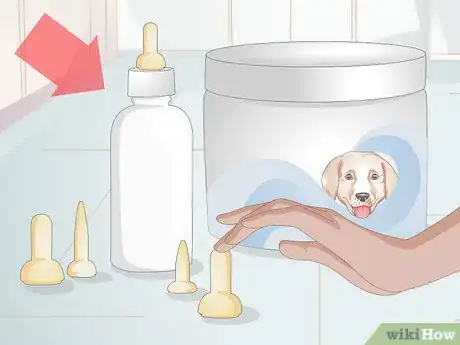

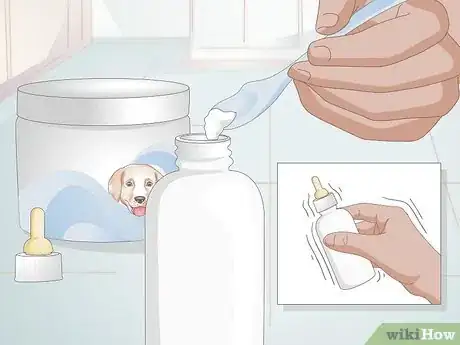
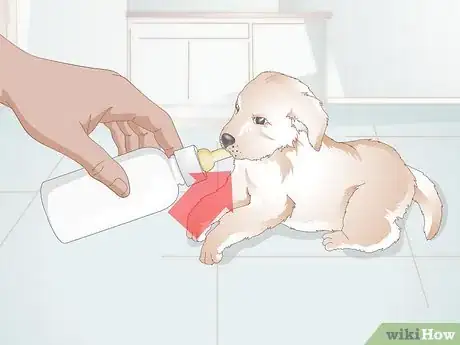
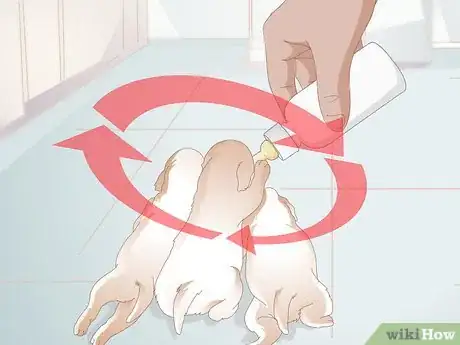
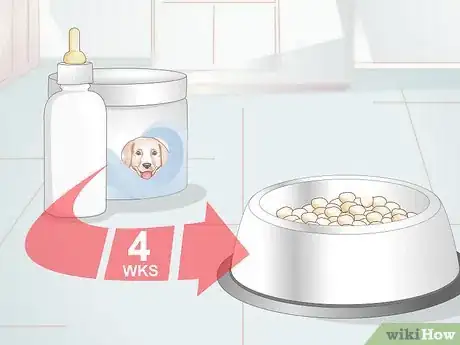
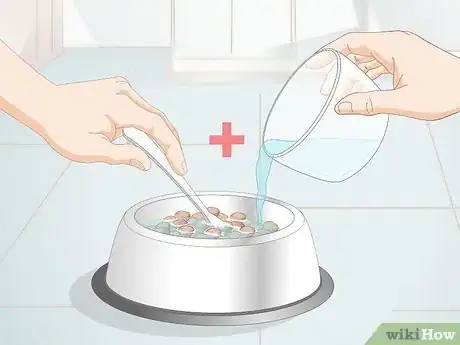
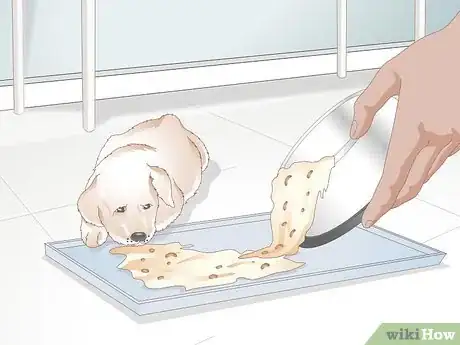
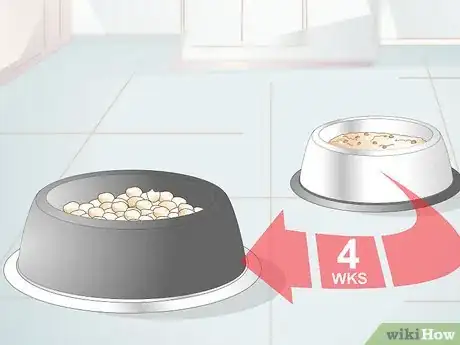

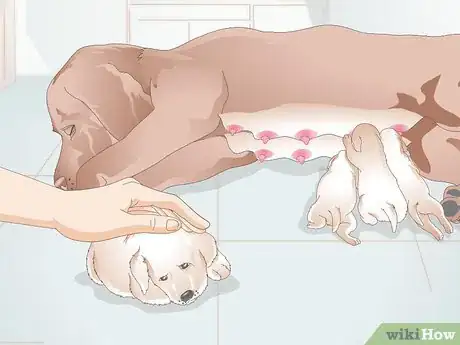
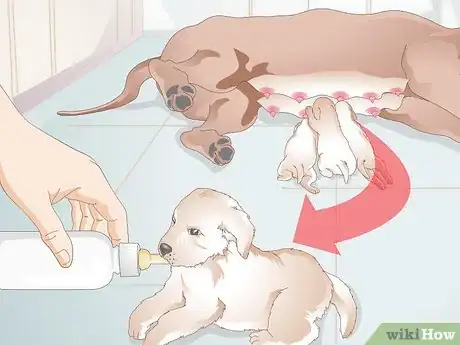








-Step-7.webp)
















































